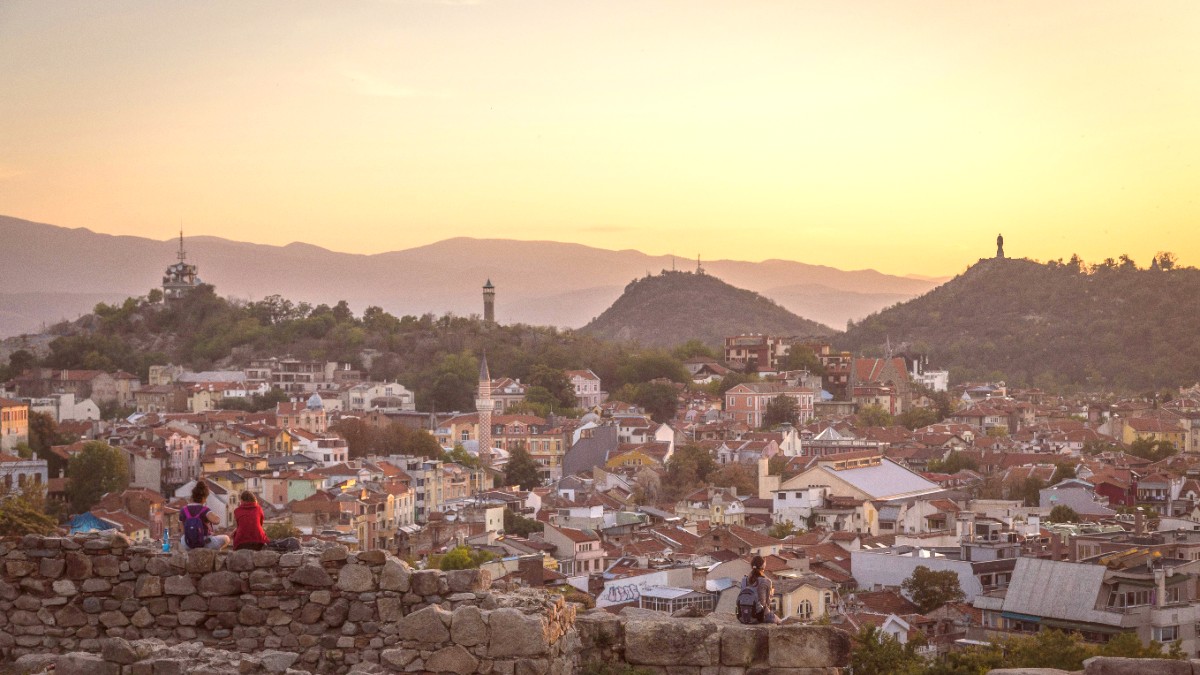
Plovdiv And Rodopi Mountains, Bulgaria
Bulgarian dishes highlight fresh, seasonal ingredients. These include many vegetables, dairy products (especially yogurt and cheese), and various meats (pork, chicken, lamb). Dishes often cook slowly for deep flavors. Common herbs are savory, mint, paprika, and garlic. Plovdiv's location in the fertile Upper Thracian Plain means much fresh produce, directly influencing local eating habits.
Key ingredients include tomatoes, cucumbers, peppers, onions, potatoes, and beans. Dairy like Sirene (white brined cheese) is common. Kiselo mlyako (thick, sour yogurt) is a national food. Pork, chicken, and lamb are frequent meats. Savory (Chubritsa) is a signature herb. Sunflower oil is the most common cooking fat.
A simple "Dobar den" (Good day) upon entering is polite. In casual places, seat yourself; in formal ones, wait for staff. Menus are usually available, with English common in tourist areas. "Nazdrave!" (Cheers!) is a common toast with rakia or wine; keep eye contact. A 10% tip is standard for good service.
Breakfast (Zakuska) is often light, with coffee and pastry. Lunch (Obed) is the main meal (12:00-2:00 PM), usually soup, main, and salad. Dinner (Vecherya) is later (7:00-9:00 PM or after), a social occasion, and can be as substantial as lunch.
An iconic fresh salad with diced tomatoes, cucumbers, onions, roasted peppers, topped with grated Sirene cheese. Found on nearly every menu.
A national favorite for its refreshing taste.
Traditional pastry with filo dough, eggs, and Sirene cheese, baked golden. Variations include spinach, pumpkin, or meat. Find fresh banitsa at any bakery.
A breakfast staple, crispy and delicious.
Popular grilled minced meat dishes. Kebapche are elongated sausages, Kyufte are round patties. Common street food and main courses in traditional restaurants (Mehana).
Essential grilled items, great with beer.
Lamb dishes, painted eggs, and Kozunak (sweet bread).
Pork dishes, Sarmi (cabbage rolls), and Banitsa.
Plovdiv's fine dining is growing. High-end restaurants offer modern Bulgarian or international cuisine with a creative touch.
Many Mehanas (traditional taverns) in Old Town and Kapana serve hearty Bulgarian food in rustic settings, often with live folk music.
Inexpensive and delicious food options are available throughout the city, from bakeries to grill stands.
Plovdiv presents a variety of international cuisine, especially in the city center and Kapana. These include Italian, various Asian (Chinese, Sushi), and Mediterranean restaurants.
Find a range of global tastes to suit your preferences.
Look for "obedno meniu" (lunch menu) at restaurants.
These are daily fixed-price menus and offer good value for money.
Halal options are very limited. Some Turkish restaurants might offer Halal meat, but it is not widely certified or advertised.
Plan ahead if Halal meals are a necessity.
Kosher food is extremely limited to non-existent. Travelers needing Kosher food should plan to self-cater or bring their own provisions.
Self-catering or pre-packaged meals are the best approaches.
When dining out with dietary restrictions, communicate clearly and politely. Patience helps achieve understanding for your needs.
Local operators offer walking food tours. These introduce participants to traditional Bulgarian dishes, guide them through local markets, and show hidden culinary spots.
Some guesthouses or specialized operators offer hands-on cooking classes. Learn to prepare staples like Banitsa or Sarmi.
The Thracian Valley around Plovdiv is rich in agriculture. Some tours arrange visits to local wineries like Starosel or Todoroff Wine Cellar for tours and tastings.
Consider cooking classes focusing on specific regional dishes from the Rodopi Mountains if your trip extends there.
Always check local event listings for current schedules of festivals and special culinary events.
Food tours provide local perspectives and hidden culinary spots not easily found on your own.
Bulgarian cuisine is a reflection of the country's rich history and geography. It is hearty and flavorful, with influences from Ottoman, Slavic, Greek, and Middle Eastern culinary traditions.